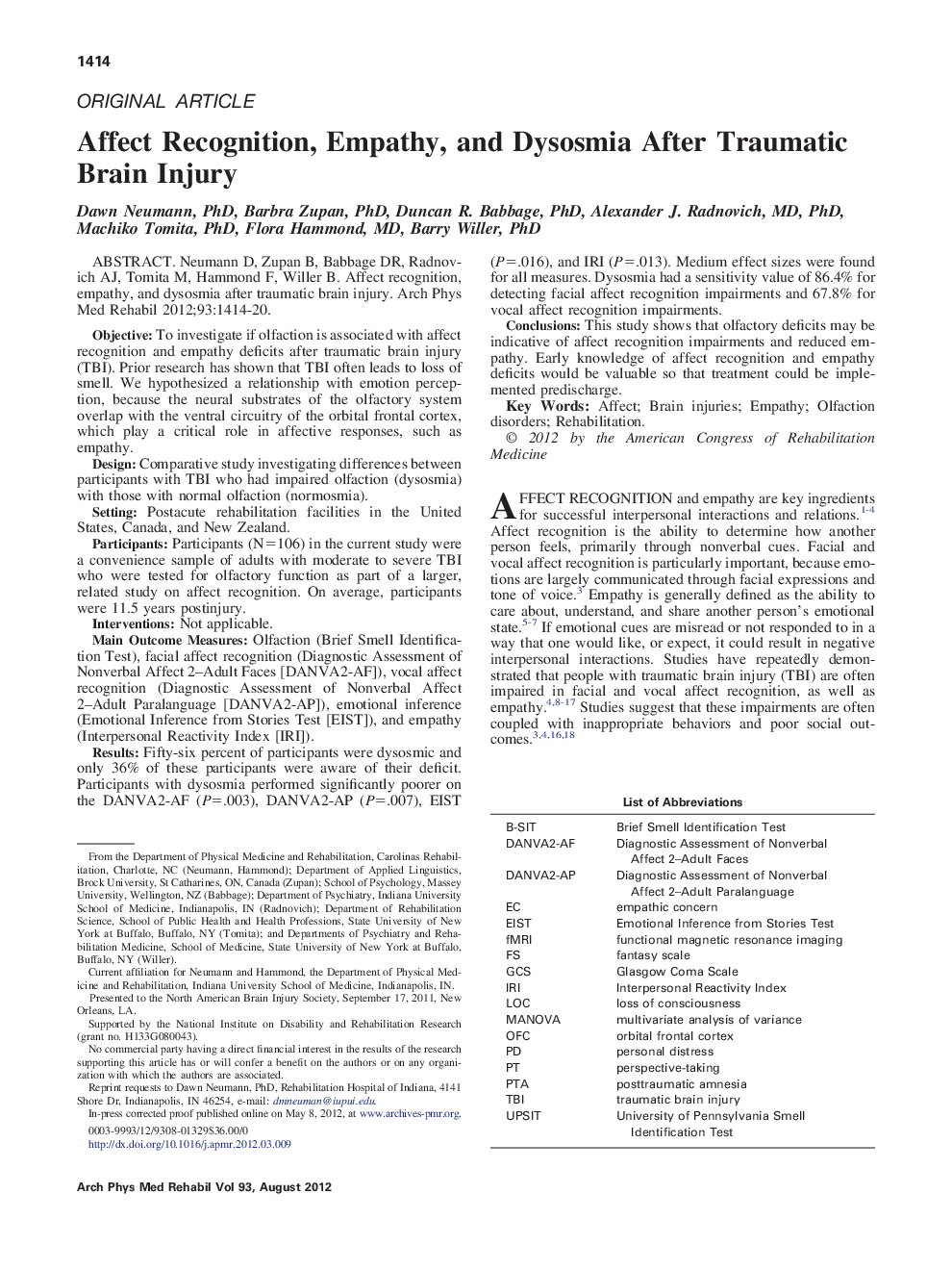| کد مقاله | کد نشریه | سال انتشار | مقاله انگلیسی | نسخه تمام متن |
|---|---|---|---|---|
| 3449566 | 1595722 | 2012 | 7 صفحه PDF | دانلود رایگان |

Neumann D, Zupan B, Babbage DR, Radnovich AJ, Tomita M, Hammond F, Willer B. Affect recognition, empathy, and dysosmia after traumatic brain injury.ObjectiveTo investigate if olfaction is associated with affect recognition and empathy deficits after traumatic brain injury (TBI). Prior research has shown that TBI often leads to loss of smell. We hypothesized a relationship with emotion perception, because the neural substrates of the olfactory system overlap with the ventral circuitry of the orbital frontal cortex, which play a critical role in affective responses, such as empathy.DesignComparative study investigating differences between participants with TBI who had impaired olfaction (dysosmia) with those with normal olfaction (normosmia).SettingPostacute rehabilitation facilities in the United States, Canada, and New Zealand.ParticipantsParticipants (N=106) in the current study were a convenience sample of adults with moderate to severe TBI who were tested for olfactory function as part of a larger, related study on affect recognition. On average, participants were 11.5 years postinjury.InterventionsNot applicable.Main Outcome MeasuresOlfaction (Brief Smell Identification Test), facial affect recognition (Diagnostic Assessment of Nonverbal Affect 2–Adult Faces [DANVA2-AF]), vocal affect recognition (Diagnostic Assessment of Nonverbal Affect 2–Adult Paralanguage [DANVA2-AP]), emotional inference (Emotional Inference from Stories Test [EIST]), and empathy (Interpersonal Reactivity Index [IRI]).ResultsFifty-six percent of participants were dysosmic and only 36% of these participants were aware of their deficit. Participants with dysosmia performed significantly poorer on the DANVA2-AF (P=.003), DANVA2-AP (P=.007), EIST (P=.016), and IRI (P=.013). Medium effect sizes were found for all measures. Dysosmia had a sensitivity value of 86.4% for detecting facial affect recognition impairments and 67.8% for vocal affect recognition impairments.ConclusionsThis study shows that olfactory deficits may be indicative of affect recognition impairments and reduced empathy. Early knowledge of affect recognition and empathy deficits would be valuable so that treatment could be implemented predischarge.
Journal: Archives of Physical Medicine and Rehabilitation - Volume 93, Issue 8, August 2012, Pages 1414–1420